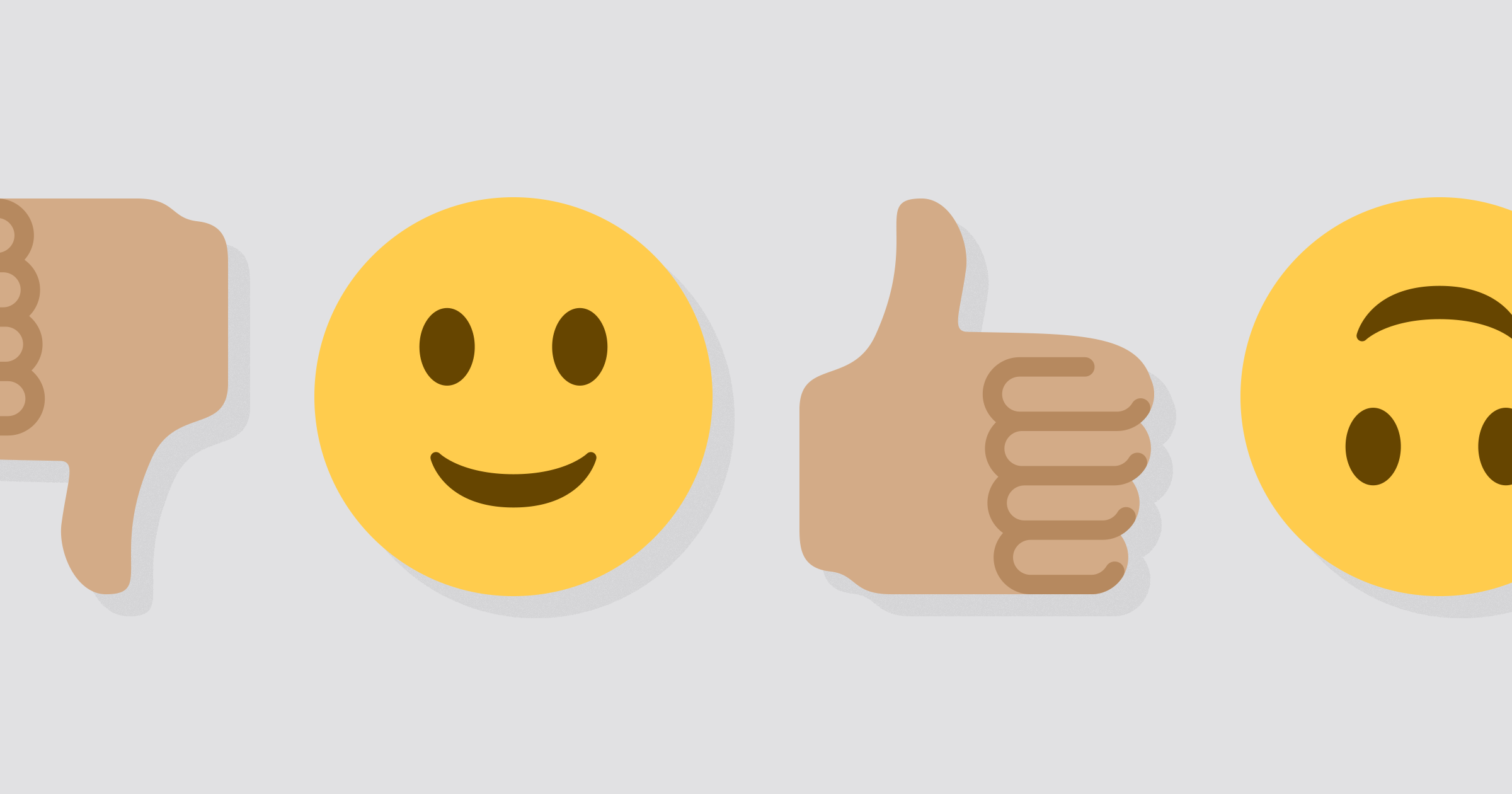Around a fortnight ago was this year’s World Emoji Day. Marked each year on 17 July, the event has been celebrated since 2014. It’s now become tradition for the big tech companies to unveil new emoji on this day – Apple this year announced the addition of a more diverse range of characters representing people with disabilities, as well as new animals such as the sloth and orangutan, and foods like the waffle and garlic (still no cinnamon bun, much to our chagrin).
Emoji have implications for both translation and localisation, so we’ve put together this introduction to the topic based on our own experience of working on projects involving emoji.
Note: Depending on your browser version and operating system, some of the emoji featured in this article may not display correctly.
A form of communication born in the digital world
![]()
The process for creating new emoji requires collaboration between the tech giants. The whole thing is overseen by the Unicode Consortium, who ultimately decide which emoji make the cut. This process ensures that emoji are visible to everyone on all platforms and not just confined to one particular operating system or manufacturer.
But why do emoji matter? And what exactly are they? They first emerged in the 90s in Japan, evolving out of the emoticons (such as :–) and :D) of the early internet age, as a way of expressing emotional nuances. In 1999, an artist working for a Japanese phone network crafted the world’s first 176 emoji. These have been enshrined at the New York Museum of Modern Art, testament to their cultural value.
The word emoji itself is from Japanese – where it is a portmanteau of the words e 絵 “picture” and moji 文字 “character” (the resemblance to the word “emotion” is purely coincidental). It wasn’t long before competing mobile networks in Japan made emoji available to their customers, and soon after the craze spread the world over.
Our ISEO and marketing services
We provide expert multilingual marketing services, including international search engine optimisation (SEO), copy adaptation and cultural consultation.
Towards standardisation
The technical underpinnings enabling emoji to be used across all kinds of systems and devices were laid by Google in 2007, when they appealed to the Unicode Consortium to add emoji to the Unicode standard. This is the same standard that allows characters in any writing system to be “encoded” and displayed on screen, like the Japanese ones above, or Nordic ones like å and ø.
Apple bolstered the appeal by pledging its support in 2009, and by 2010 Unicode could not ignore the growing trend much longer. It added the existing set of emoji to the Unicode standard and has been in charge of the fate of each and every new icon since then. Each year the range is expanded significantly, and new options such as being able to select skin tone have also been added.
While expansions have been driven by the tech giants, technically anyone can appeal for a new emoji to be added. Perhaps it’s time that Sandberg lobbied to enshrine the tradition of fika in pixels?
Are emoji a universal language?
Due to their visual and symbolic nature, emoji are often perceived as a form of communication that transcends linguistic and cultural boundaries. They have also piqued the interest of linguists, who are intrigued by how they are used to express tone and emotional nuance. In fact, many of the most frequently used emoji are faces or hand gestures expressing some sort of emotion.

It shouldn’t be taken for granted that symbols are understood in the same way across cultures, however. A classic example from the physical world is hand gestures: a thumbs-up ? is traditionally a positive message of approval in most Western countries, yet in Greece and the Middle East it can be considered rude or offensive. Similarly, the slightly smiling emoji ? is not interpreted as a symbol of happiness in China, but rather a sign of distrust or disbelief.
It can thus be helpful to think of emoji not as a language of their own, but a palette of symbols, similar to punctuation marks, that help express the intent of the writer. Having said that, each emoji has an official Unicode name in English. While many of us may never encounter these emoji names, they are vital for visually impaired users that rely on screen readers. This means that the translation and localisation of emoji names are required too.
The emoji localisation process

Sandberg has worked on several projects where clients have requested the translation or adaptation of emoji names. For one client, we adapted emoji names from American English to British English. This was more than just a spell check with a few minor revisions – we had to consider the name of each emoji and whether it was appropriate for a UK audience.
One example is the cable car emoji ?, whose Unicode name is “aerial tramway”, a term more or less unheard of in the UK. There was also the question of how to represent various sport-related symbols, such as ⚽️ “soccer ball” and ? “football”, which became “football” and “American football” respectively.
It was challenging to make sure each emoji name was distinct, consistent with the others and descriptive.
Ingrid Bragdø, one of our in-house translators, has also worked on several emoji localisation projects over the years. The biggest involved translating the names of around 8,000 emoji into Norwegian. She describes the process like this: “It looked like a typical translation task where we translated names of emoji as well as keywords that would be used to search for them. We did get some visual references, but I remember also searching for some of the emoji online to see what they looked like.”
Some of the challenges of the task involved ensuring that new emoji names stayed consistent with existing ones, for example all the “hand doing so and so gesture” or “so and so cat face” emoji had to follow the same style.
She concludes by saying she found it “challenging to make sure each emoji name was distinct, consistent with the others and descriptive, especially for some of the really specific ones.”
Culturally specific emoji: Finland’s experiment
In 2015, Finland lived up to its somewhat techy reputation and became the first country in the world to release a set of government-issued emoji. The 56 symbols depict a range of cultural artefacts and experiences – everything from the traditional rice-filled Karelian pasty (karjalanpiirakka) to the sauna, bilberry and baby box.

They also cover a range of emotions – perhaps important in a country not famed for its gushing open expressions of feelings. Examples include kalsarikännit, or getting drunk at home in your underwear; “unbreakable”, expressed by a Nokia 3310; Finnish love, a deep connection represented by an icy heart; and sisu, that Finnish resilience or hardiness that is sometimes said to lack clear expression in English (the emoji sums it up succinctly, with a character smashing a rock).




